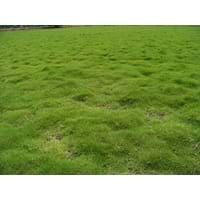Life Span
Perennial
Annual and Perennial
Type
Grass
Bulb or Corm or Tuber
Origin
South-Eastern Asia, Asia
Central America, South America
Types
Korean Lawngrass , Meyer Zoysiagrass , Manilagrass
Vine, Flowering plant
Habitat
Lower slopes, Sandy stream banks
All sorts of environments, Along Railroads, Banks, Moist Ditches, Roadsides, rocky banks of streams
USDA Hardiness Zone
8-11
10-13
AHS Heat Zone
12 - 9
12-1
Sunset Zone
H1, H2, 8, 9, 12, 13, 14, 15, 16, 17, 18, 19, 20, 21, 22, 23, 24
21,22
Habit
Clump-Forming
Vining/Climbing
Flower Color
Green, Light Green
Purple, Rose
Flower Color Modifier
Bicolor
Bicolor
Fruit Color
Non Fruiting Plant
Not Available
Leaf Color in Spring
Light Green, Dark Green
Purple, Dark Green, Black
Leaf Color in Summer
Light Green
Light Green
Leaf Color in Fall
Green, Yellow green, Gold
Several shades of Green
Leaf Color in Winter
Gold, Tan
Light Green
Leaf Shape
Grass like
Acicular
Plant Season
Spring, Summer, Fall, Winter
Spring, Summer, Fall, Winter
Sunlight
Full Sun, Partial Sun
Full Sun, Partial Sun
Growth Rate
Very Slow
Very Fast
Type of Soil
Loam, Sand
Clay, Loam, Sand
The pH of Soil
Acidic, Neutral, Alkaline
Acidic, Neutral, Alkaline
Soil Drainage
Average
Well drained
Bloom Time
Not Available
Late Spring, Early Summer, Summer, Late Summer, Early Fall, Fall, Late Fall
Tolerances
Drought, Salt, Soil Compaction
Drought
Where to Plant?
Ground
Container, Ground
How to Plant?
Sod, Sprigging or Stolonizing
Cuttings, Leaf Cutting, Tuber propagation
Plant Maintenance
Medium
Medium
Watering Requirements
weekly regular
Keep the Soil well drained, Needs very little water
In Summer
Lots of watering
Lots of watering
In Spring
Moderate
Moderate
In Winter
Average Water
Average Water
Soil pH
Acidic, Neutral, Alkaline
Acidic, Neutral, Alkaline
Soil Type
Loam, Sand
Clay, Loam, Sand
Soil Drainage Capacity
Average
Well drained
Sun Exposure
Full Sun, Partial Sun
Full Sun, Partial Sun
Pruning
Remove damaged leaves, Remove dead branches, Remove dead leaves
Remove damaged leaves, Remove dead branches, Remove dead leaves
Fertilizers
All-Purpose Liquid Fertilizer
All-Purpose Liquid Fertilizer
Pests and Diseases
Army-worms, sod webworms
Red blotch
Plant Tolerance
Drought
Drought
Flowers
Insignificant
Showy
Flower Petal Number
Single
Single
Foliage Texture
Fine
Coarse
Foliage Sheen
Matte
Matte
Attracts
Crickets
Aphids, Beetles, Cutworms, Insects, Mites, Whiteflies
Allergy
Not Defined
Abdominal pain, allergic reaction, Nausea, Skin rash, Twitching of face
Aesthetic Uses
Beautification, Cottage Garden, Farmland, Ground Cover, Landscape Designing
Not Used For Aesthetic Purpose
Beauty Benefits
Not Available
Not Available
Environmental Uses
Provides ground cover, soil erosion prevension on hill slopes
Air purification
Medicinal Uses
Unknown
Cures constipation, Fiber, Low calories, lowering blood pressure, Potassium, ß-carotene, Vitamin A, Vitamin C
Part of Plant Used
Whole plant
Leaves, Root, Shoots, Stem, Tuber
Other Uses
Used as a golf course turf
Starch, Used As Food, Used as Ornamental plant
Used As Indoor Plant
Insignificant
Sometimes
Used As Outdoor Plant
Yes
Yes
Garden Design
Container, Edging, Groundcover, Lawns and Turf, Mixed Border, Rock Garden / Wall, Tropical
Container, Edible, Groundcover, Hanging Basket, Herb / Vegetable, Mixed Border, Rock Garden / Wall, Vine
Botanical Name
ZOYSIA tenuifolia
IPOMOEA batatas 'Blackie'
Common Name
Korean Velvet Grass
Blackie Sweet Potato Vine, Sweet Potato Vine
In Hindi
कोरियाई मखमल घास
शकरकन्द
In German
Korean Samt Gras
Süßkartoffel
In French
herbe de velours coréenne
Patate douce
In Spanish
hierba de terciopelo de Corea
Ipomoea batatas
In Greek
hierba de terciopelo de Corea
Sweet potato
In Portuguese
grama de veludo coreano
Batata-doce
In Polish
Not Available
Wilec ziemniaczany
In Latin
Carl herba
Ipomoea batatas
Phylum
Angiosperms
Tracheophyta
Class
Monocotyledonae
Magnoliopsida
Order
Cyperales
Solanales
Family
Poaceae
Convolvulaceae
Genus
Zoysia Willd
Ipomoea
Clade
Commelinids
Angiosperms, Asterids, Eudicots
Tribe
Cynodonteae
Not Available
Subfamily
Chloridoideae
Not Available
Number of Species
Not Available
Importance of Korean Velvet Grass and Sweet Potato Vine
Want to have the most appropriate plant for your garden? You might want to know the importance of Korean Velvet Grass and Sweet Potato Vine. Basically, these two plants vary in many aspects. Compare Korean Velvet Grass and Sweet Potato Vine as they differ in many characteristics such as their life, care, benefits, facts, etc. Every gardener must at least have the slightest clue about the plants he wants to plant in his garden. Compare their benefits, which differ in many ways like facts and uses. The medicinal use of Korean Velvet Grass is Unknown whereas of Sweet Potato Vine is Cures constipation, Fiber, Low calories, lowering blood pressure, Potassium, ß-carotene, Vitamin A and Vitamin C. Korean Velvet Grass has beauty benefits as follows: Not Available while Sweet Potato Vine has beauty benefits as follows: Not Available.
Compare Facts of Korean Velvet Grass vs Sweet Potato Vine
How to choose the best garden plant for your garden depending upon its facts? Here garden plant comparison will help you to solve this query. Compare the facts of Korean Velvet Grass vs Sweet Potato Vine and know which one to choose. As garden plants have benefits and other uses, allergy is also a major drawback of plants for some people. Allergic reactions of Korean Velvet Grass are Not Defined whereas of Sweet Potato Vine have Abdominal pain, allergic reaction, Nausea, Skin rash and Twitching of face respectively. Having a fruit bearing plant in your garden can be a plus point of your garden. Korean Velvet Grass has no showy fruits and Sweet Potato Vine has no showy fruits. Also Korean Velvet Grass is not flowering and Sweet Potato Vine is not flowering . You can compare Korean Velvet Grass and Sweet Potato Vine facts and facts of other plants too.





